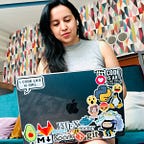AR 101 — Augmented Reality Trends (Part 2)
The development of Augmented Reality systems can be divided into two trends: Trend horizontal or AR applications, and trend vertical or AR techniques.
In this article, you will find:
- Trend horizontal or AR Applications, and
- Trend vertical or AR Techniques.
Horizontal — AR Applications
The trend horizontal covers the development of applications for Augmented Reality (Ling, 2017).
Ten of the best uses cases for AR technology:
- Medical training
- Retail
- Repair & maintenance
- Design & modeling
- Business Logistics
- Tourism industry
- Classroom education
- Field Service
- Entertainment properties
- Public Safety
Vertical — AR Techniques
The trend vertical covers the exploration of different techniques for Augmented Reality (Ling, 2017).
Some techniques, such as:
- Calculate the geometric relationship: real and virtual objects must be correctly aligned.
- Calculate continuous position: tracking techniques.
Tracking Techniques
The tracking techniques can be divided into sensor-based tracking, vision-based tracking, and hybrid tracking (Roberto, 2016)(Chatzopoulos, 2017).
Trending AR VR Articles:
1. How to use subtle AR filters to survive your Zoom meetings?
2. The First No-Headset Virtual Monitor
Sensor-based tracking
Sensor-based tracking techniques calculate the user’s or device’s position relative to the real-world using exclusively available sensors.
Among the primary sensors that can be used for tracking are inertial, magnetic, and other sensors, not including optical sensors like cameras.
Vision-based tracking
Vision-based tracking techniques calculate the user’s or device’s position relative to the real-world using images captured by the camera.
According to the available environment features, these can be classified into marker-based and markerless-based techniques.
Marker-based techniques: This technique use references or markers as artificial features to calculate the camera pose.
Markerless-based techniques: This technique uses the features of the physical object to calculate the camera pose. This technique can be divided into static model or model-based tracking, and dynamic model or feature-based tracking.
- Static model: This model uses prior knowledge of the scene that does not change during tracking to compute the device’s pose, such as CAD models.
- Dynamic model: This model does not need prior knowledge of the environment. It can build the environment model entirely from scratch with SLAM (Simultaneous Localization and Mapping).
Hybrid tracking
The hybrid technique combines sensor-based and vision-based methods.
For those looking for all the articles in our AR 101 series. Here is the link.
References
- H. Ling, “Augmented Reality in Reality” in IEEE MultiMedia, vol. 24, no. 03, pp. 10–15, 2017.
- Roberto R., Lima J.P., Teichrieb V. Tracking for mobile devices: A systematic mapping study. Computers and Graphics (Pergamon), 56 , pp. 20–30. 2016.
- D. Chatzopoulos, C. Bermejo, Z. Huang and P. Hui, “Mobile Augmented Reality Survey: From Where We Are to Where We Go,” in IEEE Access, vol. 5, pp. 6917–6950, 2017.
